Art Special: Klingelpütz Parkuhr
Based in and around the Hansa Gymnasium, Art Special is an event held every few years in cooperation with Art Cologne. In 2010 the project was designed to establish new connections between the schools and colleges surrounding the small urban Klingelpütz park near the centre of Cologne. A group of 20 artists were commissioned by directors Uta M. Reindl and Georg Dietzler to work on individual projects within one of the schools. We choose to work with a group of 14 to 16 year old pupils at the Gymnasium on a radio installation for Klingelpütz park which we called Klingelpütz Parkuhr
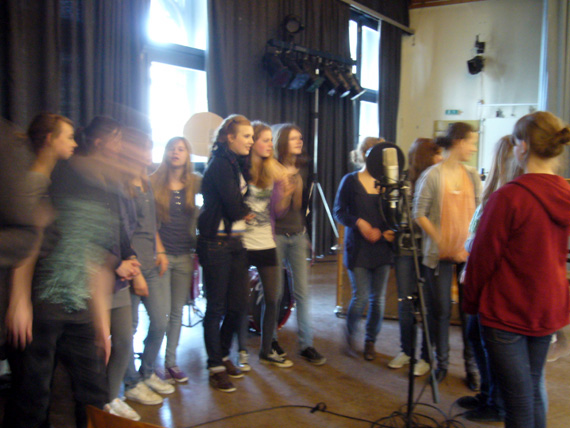
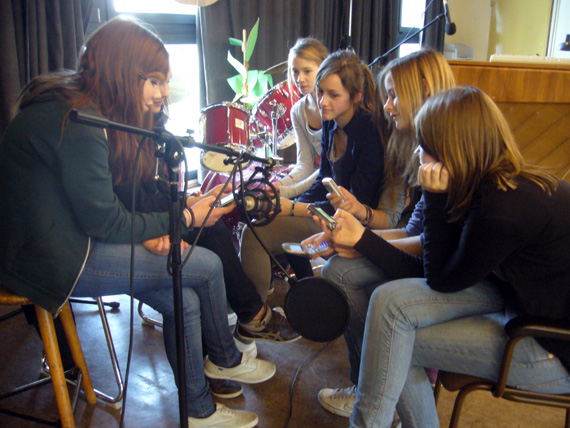
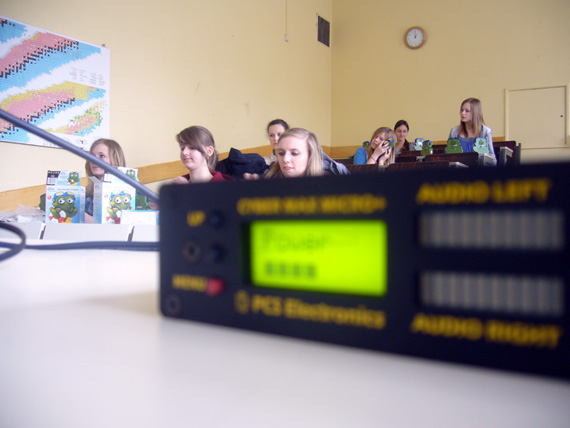
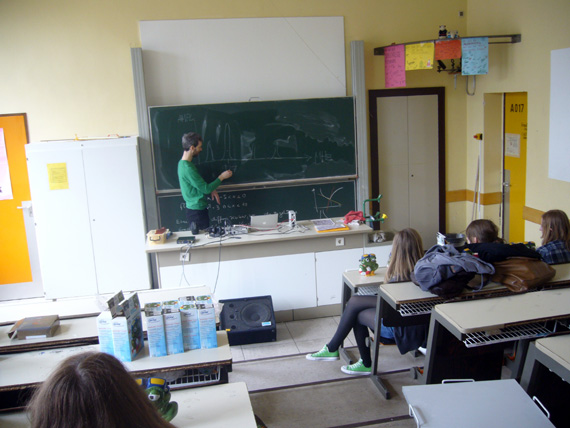
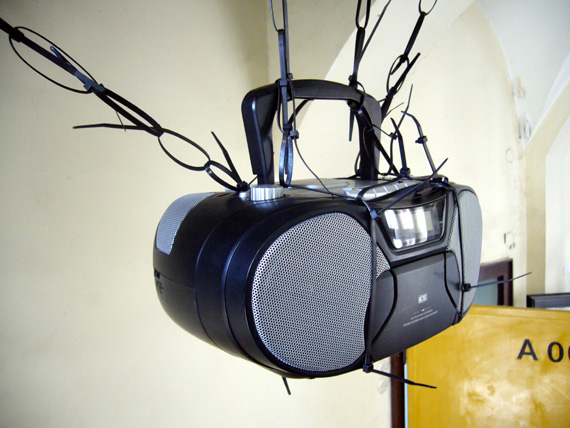
We were assigned the student mentors Marieke Schneider, Samira Schäfer and Hannah Stelberg at the UNESCO-supported Hansa Gymnasium. Their job was to help us realise the project by managing our student group and offering technical assistance. Spanning several sessions we worked over a few months with the group to produce tiny soundscapes to play as a 72 hour sound installation in Klingelpütz park. The idea was that every hour on the hour the Klingelpütz park clock would strike all over the park – from multiple sound sources hidden in trees and bushes. Each and every hour would offer a new audio surprise to whoever or whatever happened to be passing
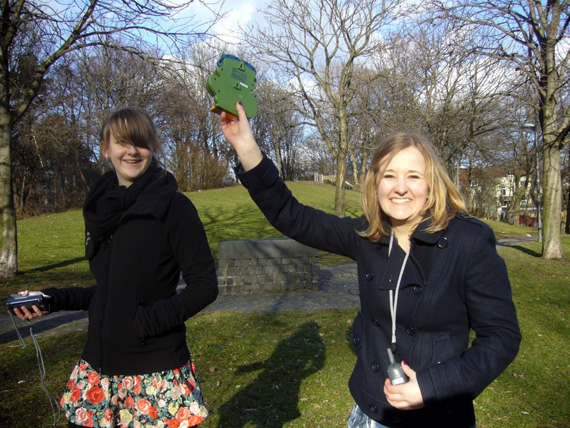
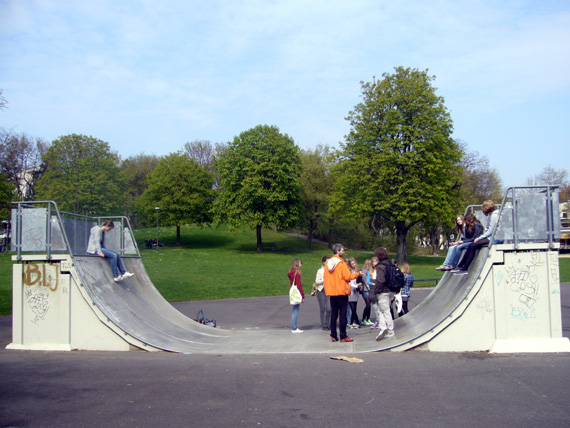
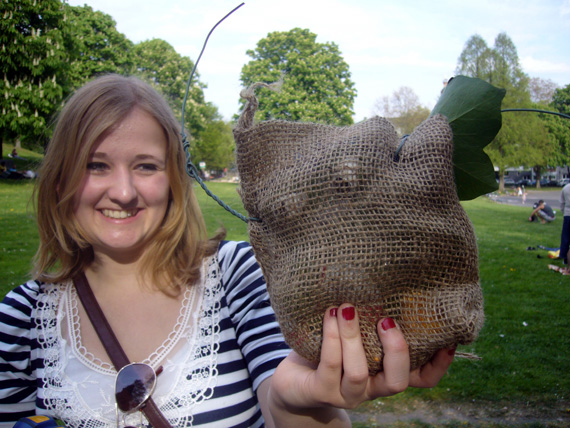

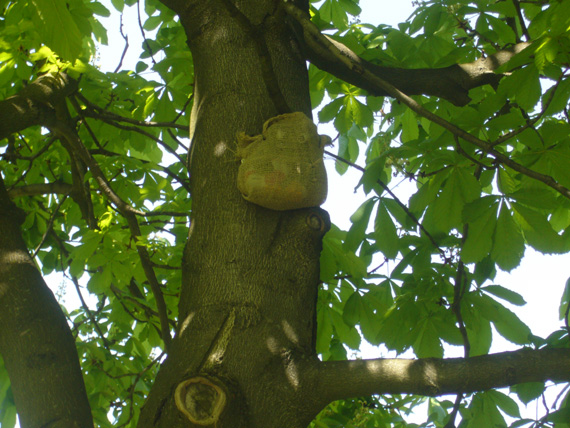
We wanted shower radios to diffuse the installation and ensure it remained weatherproof, so along with the students we selected some nice frogs for the job. Once we had tested the transmission set-up, we set off to the park to find suitable locations and test out some camouflage. It was noticeable to us how far removed today’s teenagers already are from the concept and awareness of radio. Yes, if you send a signal, any radio can pick it up!

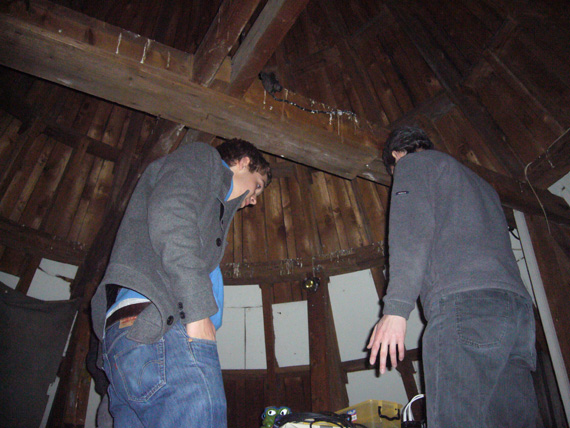

The installation required a transmission site to host our radio transmitter and antenna. The perfect spot was a medieval tower, part of the former city wall. Now housing a youth club, it was possible to have easy access to the building. Unfortunately the pigeons had not all moved out of the roof space. [Photo of our equipment set-up by Alexander Basile]

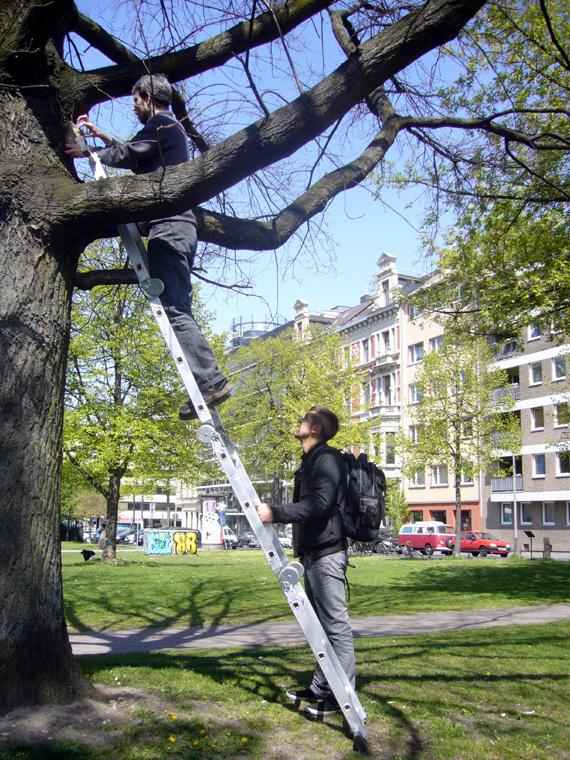
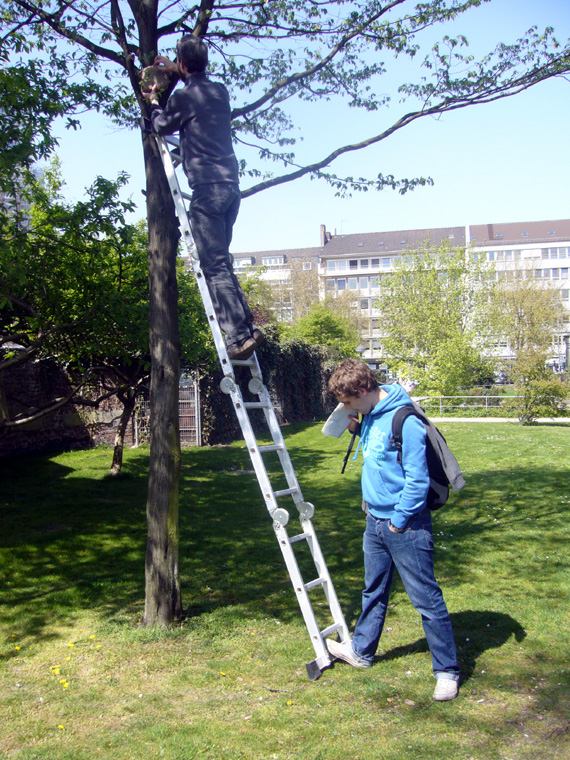


We found some more willing volunteers who helped fix some radios in out-of-reach places. Others were simply well concealed by foliage, which, despite having drawn up a decent plan, made it somewhat tricky to perform ongoing daily checks to ensure that all were still broadcasting true to frequency and had not wandered off to a nearby station. The installation was designed to be perfectly quiet in between the short hourly soundscapes, therefore it required a fair bit of maintenance. Our helpers were a godsend
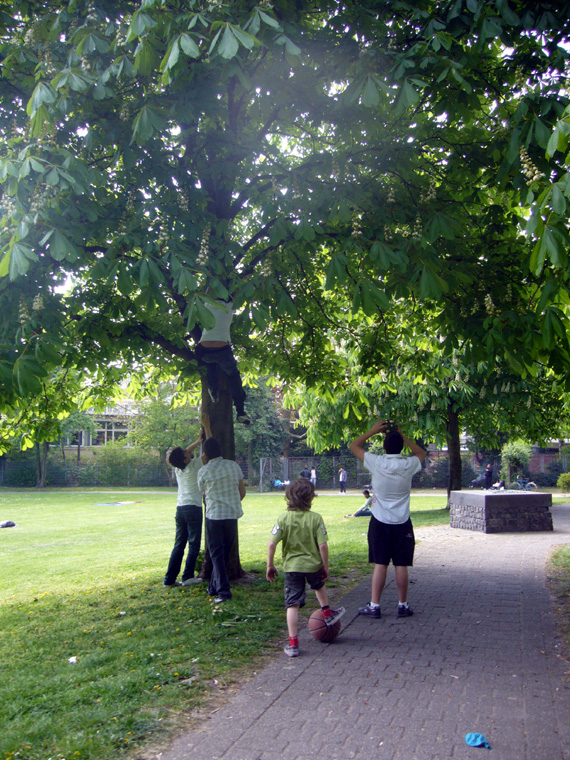
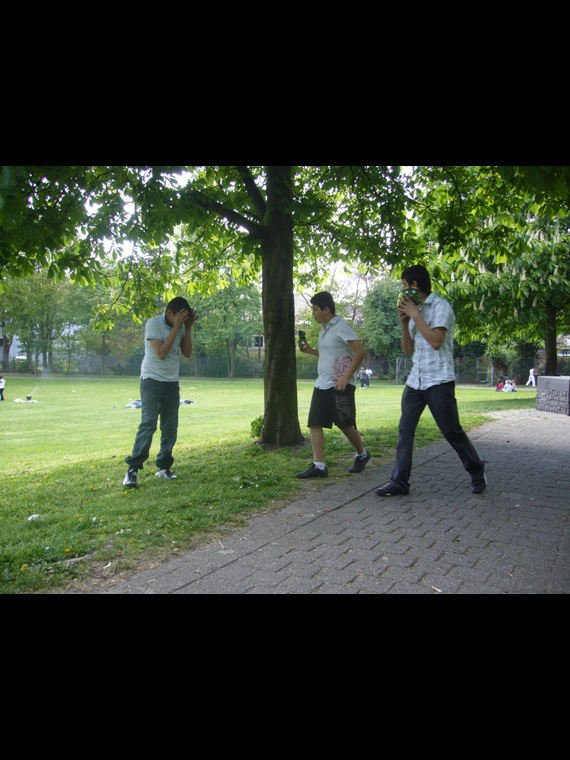

During the planning phase, we had been warned about attempting to work with equipment in the park because it was supposedly home to rival gangs, who would not tolerate an invasion of their territory by artists. After working there intensively over a week, we observed very little to cause concern. On the final day, some local boys discovered the radios and set about removing them from the trees. Watching them playing the dials, it confirmed our perception of a generation removed from the experience of receiving radio signals. Of course they were not happy when they saw me [Sarah] photographing them, and tried to intimidate me a little. I explained that I was documenting the radios as part of our project. It turned out that they knew about Art Special, so when they started up the next tree I asked them to leave the rest in place until the end. They gave up and ran off half exhilarated by their ‘crime’, and half curious about our extraordinary encounter, which had seen them get accidentally involved in an art project
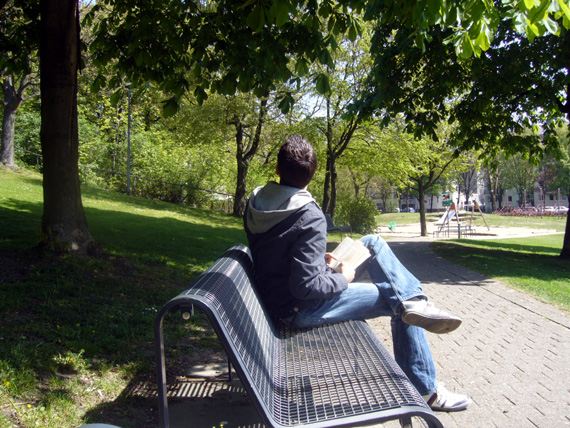
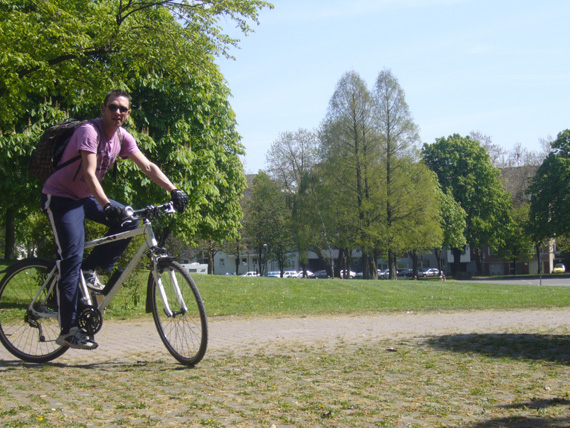
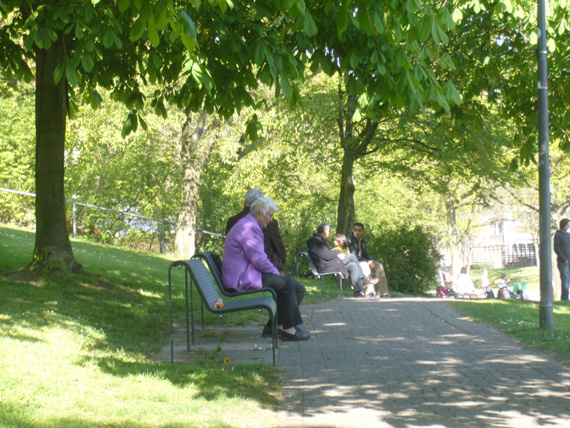
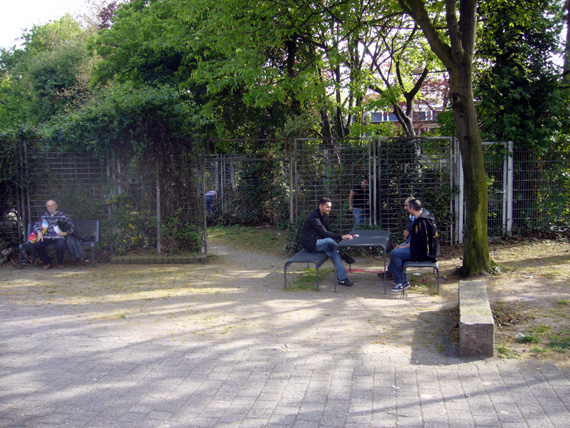
Other public reactions were of equal puzzlement. A sound appeared, and then it was gone. What was it? How? Why? A soundscape suddenly alerted their ears, and just as suddenly all returned to normal. Until an hour later.
One radio hanging high above a corner of the park apparently frequented by junkies was destroyed. Someone had thrown rocks at it, perhaps spooked in the middle of the night by strange noises…
And who can blame them?
Visitors to Art Special heard about the installation in the park and went along to experience it. They did not know however where the radios were placed. This was deliberate, we explained to the parents of our group who were exasperated at not hearing their offspring’s work:
…the installation was designed to take the public by surprise, not to function as an exhibition space. It was fascinating as these visitors then described all the sounds they had actually heard when not sure what to listen out for. So for them the installation had been activated in a different way – by ‘standing in a park listening’
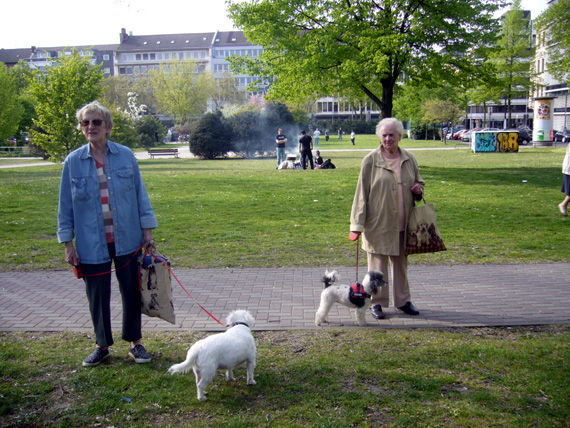
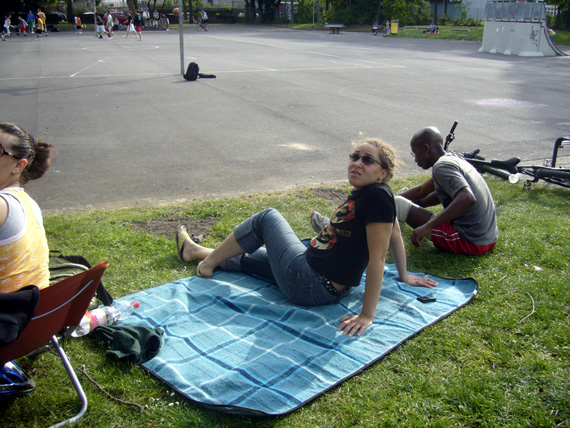
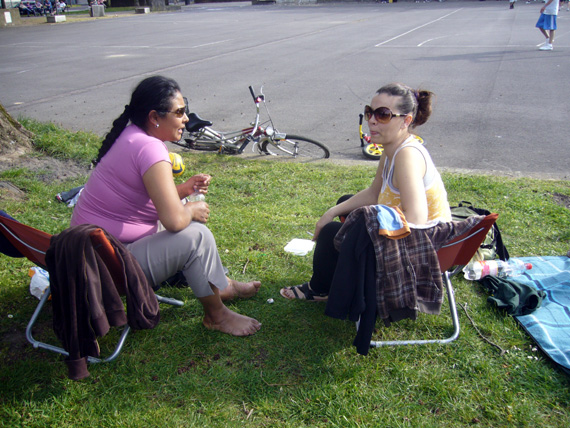

We had to dismantle the installation during the day while the park was still inhabited, but our apprehension soon turned to pleasure when people started asking us if we were the ones responsible for the noises. The old ladies assured us it would take more than a few peculiar sounds to disturb them, others told of how they had been convinced their friends were playing tricks on them for a few days until one of their party had managed to track down one of the radios. The mood was genial, people we met in the park were quizzical about the project, and some liked it so much they wished it would remain permanently active. We left feeling extremely satisfied and realised that we had become sentimentally attached to the special atmosphere defined by the boundaries of Klingelpütz Park. Today it is a fitting living memorial: until 1968 it was not a park, but the largest prison in Cologne. Between 1933 and 1945 more than 1000 opponents of the Nazi regime were executed here
